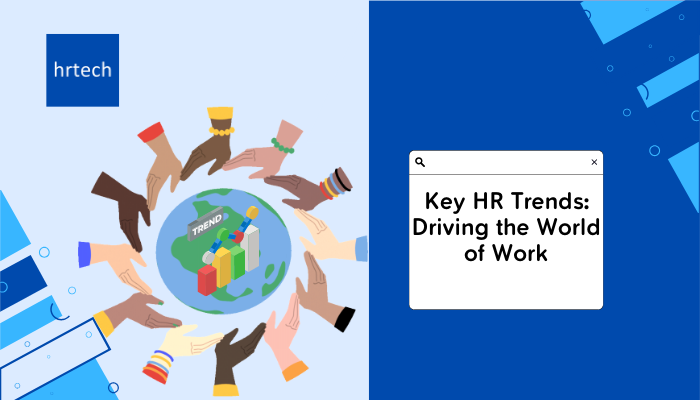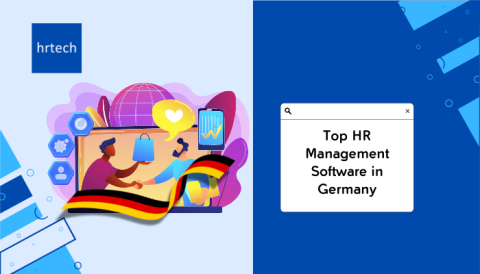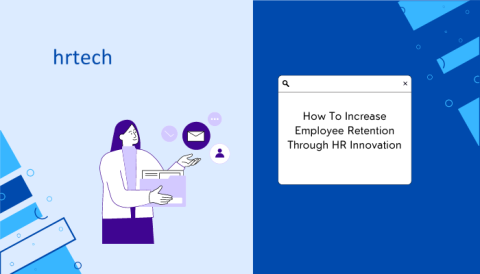The HR industry is at a crossroads, with new challenges and opportunities emerging in equal measure. By embracing change and adopting a strategic approach, HR professionals can enable their organisations to thrive in the years ahead, leveraging the full potential of human talent and technology to drive success.
by Swechha Mohapatra, Head Consulting & Delivery, hrtech

The world of work has undergone significant changes in the past couple of years, with the pandemic proving to be the biggest disruptor and accelerator of the new decade. It forced businesses and organisations to adopt new ways of working, with remote work and hybrid work being adopted by many. This shift has also led to significant changes for the way HR teams function with HR technology playing a crucial role in enabling business the workforce during these challenging times.
As we move towards 2023, the HR industry is expected to continue to evolve and transform, driven by market uncertainties, the increasing pace of change, and the need for transformation.
In our 2023 HR Tech Market outlook report, we will explore some of the key HR trends that are expected to shape the industry in 2023. These trends including importance of flexibility in the new normal, increasing emphasis on employee experience, the shift towards a skills-based approach to work, redesigning organisations to focus on productivity, and the acceleration of data-driven decision-making- are contributing to shaping the HR tech industry and the way HR tech solutions will be designed.
By understanding these trends, HR professionals can not only prepare for the challenges and opportunities of the future, but also ensure that they stay ahead of the curve and deliver value to their organisations.
Read on as we explore these trends in more detail in the blog and discover how they will shape the HR industry in the years to come. Download the ‘2023 HR Tech market Outlook report’ to deep dive into the HR Tech Market and the trending HR Tech tools of 2023.

5 Key HR Trends for 2023
The latest top 5 Key Trends for HR 2023 are:-
- Flexibility is the new normal
- Employee Experience 2.0 in a hybrid workplace
- Skill is the new currency
- Organisational Redesign and Workforce Effectiveness
- Data- & Tech Centric HR function
Trend 1: Flexibility is the New Normal
According to a LinkedIn survey, employees who are offered flexibility in terms of time & location of work are 2.6x more likely to be happy at work and 2.1x more likely to recommend others to work for their employer.
The business and HR teams are realising the growing importance of providing flexibility to meet the demands of employees. With the changing needs and preferences of employees, flexible HR practices can cut across multiple HR functions right from recruitment and talent development to career and succession planning, organisational structure and design, and talent retention.
Traditionally, flexibility was touted as having remote and hybrid workplaces. The concept has aggressively evolved over the last 2 years. The report dives in detail into the ‘Flexibility trend’ highlighting the finer aspects of embracing the Gig Economy, adopting a Four-Day Workweek, importance of Earned Wage Access (EWA) and Financial Wellness, and the Rise of Moonlighting.
The gig economy is on the rise and offers many benefits to workers such as flexibility, control, and autonomy. A four-day workweek is becoming increasingly popular and has shown to increase employee productivity and job satisfaction. EWA and financial wellness programs can help employees with financial stability and reduce their dependence on predatory lenders. Moonlighting can provide additional income for employees and can also help them develop new skills and gain experience.
Overall, flexibility in organisation and HR policies can have positive effects on organisational culture and performance by creating an adaptable culture that supports change, learning, and improvement.
Trend 2: Employee Experience 2.0 in a hybrid workplace
One of the most significant HR trends in recent times is the growing focus on enhancing the employee experience. In the wake of the pandemic, employees are looking for more value-adding and purpose-centric work from their workplaces. Employers who prioritize communication, flexibility, inclusivity, wellness, feedback, and recognition can create a work environment that drives business success while supporting employees. This is particularly crucial in a hybrid working environment, wherein regardless of their work location, employees expect a seamless experience that allows them to work effectively and efficiently.
The Employee Experience 2.0 approach is all about fostering autonomy with togetherness. The report highlights four key trends that are essential in this approach. The first trend is Differentiated Engagement for Deskless Employees, who form up to 80% of the global workforce population. These employees need access to mobile-friendly technology that is easily accessible, delivered when needed, and includes micro training content.
The second trend is People-Centric Design Thinking, which puts people at the center of the development process. This approach enables HR to think beyond conventional processes and focus on needs, wants, experiences, and outcomes thus reinventing every work aspect to make it more people-oriented. People Centric Design Thinking improves employee engagement and experience by establishing inspiring workplaces, friendly systems, innovative roles, and ways to collaborate.
The third trend under EX 2.0 is Holistic Employee Wellbeing. The pandemic has accelerated the transition of wellbeing from just the physical aspect to a holistic approach that encourages individuals to recognize the whole person. A holistic wellness model goes over and above the usual perks and includes initiatives that help employees feel satisfied, motivated, engaged, empowered, and respected both professionally and personally. Organisations that have implemented employee wellness programs have observed significant improvements in various areas.
Finally, the report discusses the Rise of Boomerang Employees aka Rehires. These employees who quit their jobs earlier and are now returning to the company are a crucial chunk of the talent pool for hiring managers. They bring in experience from their past occupations and reflect the reasons as to what did not work in the first innings, further allowing organisations to implement a course correction. However, the HR teams should be cautious about the reason and intention of these rehires, whether it is out of loyalty to the previous employer or simply because the employee couldn’t fit into the new job.
Trend 3: Skill is the New Currency
In recent years, there has been a growing trend towards a skill-based hiring approach in the field of human resources. This approach is based on evaluating a candidate’s practical skills and performance, rather than relying solely on their formal qualifications.
One of the main benefits of skill-based hiring is its ability to reduce bias and discrimination in the hiring process. By evaluating candidates based on objective and measurable criteria, such as skills and abilities, rather than subjective and arbitrary factors like education or experience, HR professionals can create a more fair and equitable hiring process.
Skill-based hiring has the potential to promote diversity and inclusivity within the workforce by offering opportunities to candidates who possess the necessary skills but may come from non-traditional backgrounds or have alternative credentials or pathways.
To implement a successful skill-based hiring approach, HR professionals should define the skills and competencies required for each job role accurately and clearly communicate the same to the candidates. This can be achieved through conducting a job analysis and consulting with stakeholders. HR should also assess candidates’ skills and competencies using valid and reliable methods, such as tests, simulations, portfolios, or projects.
Trend 4: Organisational Redesign and Workforce Effectiveness
Organisational redesign is a process of aligning an organisation’s structure, processes, and people with its strategy and objectives. It can improve productivity, collaboration, agility, and engagement. With the pandemic forcing many organisations to re-evaluate their traditional working models, two trends are expected to drive organisational redesign to increase workforce effectiveness.
First, navigating through a multi-generational workplace can bring diverse perspectives, experiences, and ideas that can enrich organisational culture and performance. However, it can also create bias, tension, and retention issues. Second, Diversity–Equity–Inclusivity-Belonging (DEIB) getting prominence amongst the board. DEIB framework aims to create a work environment where people of different backgrounds, identities, and perspectives are valued, respected, and empowered. The approach is expected to enhance organisational performance, demonstrate organisational commitment to social justice and meet the growing expectations of various stakeholders. Boards can promote and support DEIB by articulating a clear vision and strategy, defining and tracking relevant metrics and indicators, allocating sufficient resources, and modelling inclusive behaviour.
Trend 5: Data- & Tech Centric HR function
The rise of big data and advanced technology has enabled organisations to gather and analyse vast amounts of data on their employees, giving HR teams access to valuable insights and information.
The trend towards data and technology-centric Human Resources is being driven by the need for organisations to remain competitive in an increasingly complex and rapidly changing labour market landscape. Moreover, the use of technology in HR processes has increased efficiency and productivity, allowing HR leaders to focus on more strategic initiatives.
By leveraging data and technology, organisations can better understand their employees’ needs and preferences and make informed decisions that drive employee satisfaction, engagement, and retention. The below three key themes are coved under the trend of data- & Tech centric HR :
- People Analytics for Data Driven Insights: The use of People Analytics has proven to be highly effective in identifying and addressing gender pay gaps, reducing attrition rates, and identifying productivity trends in HR processes. However, despite the discipline’s potential, many organisations fail to integrate analytics into their day-to-day HR operations, primarily due to the disjointed nature of HR technology. To overcome economic downturns, it is crucial for organisations to utilize People Analytics capabilities fully. By leveraging employee data, businesses can gain valuable insights to enhance the employee experience, streamline operations, and drive favourable business outcomes. To achieve reliable people predictions, it is vital for organisations to foster the right mindset towards People Analytics.
- HR in Metaverse: With the increasing adoption of the remote work model, HR leaders are exploring Metaverse (a 3D virtual network for social connections) to increase employee engagement & collaboration. Examples include Meta’s Horizon Workrooms & Microsoft’s Mesh utilizing VR to enable remote teams to work in the same virtual room.
- Web 3.0 and Human Resources: Web 3.0 refers to the next generation of the internet based on decentralized technologies like blockchain, artificial intelligence, and edge computing. It has the potential to revolutionize human resources by enabling new ways of managing and engaging employees, enhancing HR processes and systems. Use-cases of Web 3.0 in human resources include decentralized employee management, personalized learning and development, smart talent acquisition, and employee ownership and participation models. These applications can increase transparency, protect data privacy, enhance employee engagement, performance, and retention, improve the quality and diversity of hires, reduce hiring costs, and ensure fairness.
- Generative AI and ChatGPT: Generative AI tools like ChatGPT by OpenAI has taken over the world by a storm and is set to be key disruptor in the years ahead. There have been many promising use cases which are enabling its users to be more productive leveraging AI in everyday work. As a background, Generative AI is a form of artificial intelligence that uses existing data or inputs to generate new content or data. ChatGPT is an example of generative AI that can produce natural language texts based on a given prompt or context. HR can use generative AI and ChatGPT for various purposes, including content creation, talent acquisition, learning and development, and employee communication, which can enhance efficiency and engagement. However, these tools also pose challenges and risks for HR, such as data quality, ethical issues, and the need for human skills. HR teams need to exercise critical thinking, creativity, and judgment when using generative AI, and develop new skills such as data literacy, digital fluency, and ethical awareness to leverage these tools effectively.
Conclusion:
The HR industry is on the cusp of significant change, with new trends emerging that will shape the industry in 2023 and beyond. While the past couple of years have been marked by uncertainty and disruption, they have also demonstrated the resilience and adaptability of the workforce and the HR function.
As we move forward, it’s clear that change is here to stay, and the HR function needs to ensure that they are truly strategic, enabling businesses to navigate these changes while leveraging human potential and technology.
By embracing these trends that are changing Business and HR, HR professionals can create a workforce that is agile, resilient, and productive, capable of meeting the challenges and opportunities of the years ahead.
The HR industry is at a crossroads, with new challenges and opportunities emerging in equal measure. By embracing change and adopting a strategic approach, HR professionals can enable their organisations to thrive in the years ahead, leveraging the full potential of human talent and technology to drive success.
About the Author:

Swechha Mohapatra (IHRP-CP, Associate CIPD) is Head of Consulting & Delivery at hrtech and has around 10 years of global experience in various Talent functions. She is a passionate HR Tech evangelist, a member of IHRP HR Tech CoP Taskforce, and an avid learner who is certified Six Sigma-Green Belt with a background of MBA (Specialization in HR and IT) and Master’s in Labor Laws and Labor Welfare.




